April 2022 Reading Round-Up
The best and worst of my reading month
Welcome to the April 2022 Reading Round-Up. Each month I write about the books I've read and rank them from worst to best.
I’m going to keep the intro short because there are a lot of books to get to. I had a high quality reading month, with four 8.5s, five 9s, and one exceptional 10. As the weather gets warmer and we head towards summer (already!?) I’m working on a summer reading guide filled with new and upcoming releases, so please stay tuned. Until then, please continue to reach out with comments or suggestions. Enjoy!
17. Dog Park - Sofi Oksanen
Fiction, 348 pages
A thriving market for the female body exists at the dawn of the post-Soviet era in Ukraine, targeting healthy women with child-bearing capabilities. Olenka, the narrator of Dog Park, is an employee at a reputable firm for such business, and her job is to recruit vulnerable women, facilitate their extensive medical testing, and then match them with wealthy couples as surrogates. The commodification of these women is legal, but operates in a dubious ethical space within Ukraine’s new capitalist economy, in which the heavy emotional and physical burden these women are subjected to is assuaged by the hefty sums they are paid. Flashing forward to 2016, Olenka has moved to Helsinki, Finland, having left the industry after a mysterious conflict threatens her life. She spends her days sitting in a dog park, watching a family whose children readers learn are her own. One day while sitting in the park, a woman from Olenka’s Ukrainian past sits next to her, reminding her suddenly of the danger she ran from. I thought this book had a lot of potential, particularly given the uniqueness of the plot. Unfortunately, however, I felt like Oksanen was so focused on drawing out the elements of the story's mystery that she added too many twists, neglecting to fully flesh out the complicated lives of her characters that allow the book to move forward.
Rating: 7/10
16. Silverview - John le Carré
Fiction/Espionnage, 224 pages
Silverview is the final book written by John le Carré before his death, released posthumously a year after his passing. Le Carré is widely considered the best spy novelist of all time, known for drawing on his own experience as a member of the British intelligence service at the beginning of the Cold War. I wanted to read Silverview to see the influence of time on le Carré’s writing, particularly because this novel is written in the post-Cold War era. Silverview centers around three main characters in the assumed present. Julian, the first, has recently moved to East Anglia to open a bookshop. One day, an old man enters the store and quickly takes a peculiar interest in its maintenance and operations. His name is Edward, and readers learn that he is an ex-member of the service. Meanwhile, Proctor, the chief of domestic operations, begins an investigation into Edward’s recent activity, which serves as the main mystery of the novel as readers try to put the clues together to understand how Edward’s past as an agent fits into the man he is today. Le Carré is known for complicated mysteries with moving pieces that come together explosively at the very end. In comparison to this reputation, Silverview’s conclusion felt underwhelming, which perhaps was in line with a theme throughout the novel: agents reminiscing about their activities at the height of their importance and questioning if their actions really mattered at all.
Rating: 7/10
15. Honor - Thrity Umrigar
Fiction, 336 Pages
After her colleague suffers an accident, Smita, an Indian-American journalist, reluctantly travels back to her hometown of Mumbai to help cover an important developing story. The brothers of Meena, a Hindu woman who dared to marry a Muslim man, decide to set her home on fire while the couple is inside, and the husband dies. Buoyed by a local activist lawyer, Meena pushes to press charges against her brothers who are being shielded by corrupt government and religious officials in the town. Along with a friend of her colleague, Smita travels to the village to witness the events, but struggles to disentangle her negative feelings towards the country of her birth with the story that she is supposed to objectively cover. While the book was readable, I was bothered by the artificial elements of the plot and surface-level character development. Smita's critiques of India feel stereotypical and lack nuance. The sudden reveal halfway through the book that Smita’s criticisms are based in a traumatic childhood experience with similar roots as Meena’s highlighted the author’s contrived attempts to push the story forward while promoting her moralistic message.
Rating: 7/10
14. The Maid - Nina Prose
Fiction/Mystery, 286 pages
Molly is a 25-year-old maid at the Regency Grand, a fancy boutique hotel in an unnamed city. Although never explicitly stated, Molly may have Autism spectrum disorder, which Prose indicates in Molly's speech, mannerisms, and preferences, including Molly's obsessive commitment to her job. When readers meet Molly she is grieving the loss of her grandmother, her caretaker and guardian. One day, while cleaning the room of Charles and Giselle Black, a rich and famous couple, Molly discovers Charles dead in his bed. After calling 911, Molly quickly becomes the police's number one suspect, and is even arrested and charged before a group of friends at the hotel band together to prove Molly's innocence and catch the real killer. There is no doubt that this was a charming and quickly paced mystery, however, I thought that some of the plot points were too convenient, the suspects were easy to spot, and the ultimate reveal was somewhat absurd. Further, I was completely distracted by the shoddy legal aspects of the plot, including when the detective acted as the prosecutor during Molly's arraignment. Little fact-checking fixes like that would have made the book stronger and more believable.
Rating: 7/10
13. Going There - Katie Couric
Memoir, 528 pages
Growing up, I remember seeing Katie Couric on The Today Show nearly every morning with her trademark smile and energy. In 2006, Couric moved to CBS Evening News to become the first female evening news anchor in television history. Going There is marketed as a tell-all memoir, full of insider industry knowledge that spans Couric’s long career in production, local news, Today, Evening News, Yahoo News, and, finally, a private media company jointly run with her second husband, John.
Like anything personal made public, however, I found Couric’s honesty had its limits. Couric’s writing is at its most heartfelt when she writes about her first husband, Jay, who tragically died of pancreatic cancer when their two daughters were still very young. Her descriptions of Matt Lauer and the sexual harassment allegations leveled against him felt guarded, with Couric talking about how close they were in one chapter and vehemently denying personal knowledge of his actions in the next. This excuse fell flat for me, especially when considering Couric’s comments about the competitiveness she felt with fellow female journalists who she feared would replace her, while also talking in later chapters about her desire to break ground for women everywhere when she accepted her newscaster position at CBS. Couric also frequently comes across as aloof, acknowledging her extraordinary wealth and philanthropic efforts for pancreatic cancer research, while also breezily discussing the search for her Park Avenue apartment or the $200 bottle of wine she had on a first date. If you’re going to pick this book up, I recommend doing it in audio format, as recordings of Couric’s famous on-air moments are interspersed throughout. Otherwise, you could probably read a review to get the relevant details.
Rating: 7/10
12. Under the Rainbow - Celia Laskey
Fiction, 276 pages
Under the Rainbow is set in Big Burr, a small town in Kansas known for its meatpacking plant, conservative values, and status as the most homophobic town in America according to the non-profit Acceptance Across America. As a social experiment, Acceptance Across America decides to send a task force of queer volunteers and employees to live and work in the community for two years and hopefully leave the town more accepting than how they found it. Each chapter is written from the perspective of a different person in Big Burr, including the teenage daughter of the leader of the task force who is desperate to return to her life in Los Angeles, the housewife offended by the task force's characterization of the town as bigoted, and the husband who is given the courage to recognize that he is gay despite living his whole life in the closet.
I understand that by writing each chapter from a different character's point of view, Laskey's goal was to grant readers an expansive picture of the town. However, because Laskey needed to write from so many different perspectives in order to achieve this goal, the character development was lacking. Quick to cover background information in order to focus on the present, I felt like I was accessing a surface-level, or even sometimes stereotype-based, description of many of the characters. This is a shame, especially because the complicated themes that Laskey is writing about - identity and acceptance within a conservative community - should be reflected in the characters that represent them.
Rating: 8/10
11. Dirty Work – Eyal Press
Non-Fiction, 275 pages
In Dirty Work, Press writes about workers whose jobs perform functions society cannot live without, and yet condones as morally objectionable. Press divides the book into four sections, each highlighting a different type of “dirty work.” The first section is centered around mental health professionals working in prisons, which house a disproportionate number of people in need of psychiatric services. Despite this, the resources allocated to this work are abysmal at best, creating a chaotic environment in which untreated mental health issues turn into daily acts of violence amongst prisoners and guards alike, leaving psychiatric staff feeling complicit. Press writes about drone strike operators in the second section – men and women who interpret satellite imagery and then initiate strikes from thousands of miles away. Although drone strikes frequently hit the wrong targets, resulting in the deaths of innocent civilians, society writ large has accepted the use of drones as an acceptable form of warfare because of its limited impact on the everyday lives of Americans. The third section focuses on slaughterhouses and the exploitation of the large immigrant community who kill and process massive quantities of meat daily. Despite the adverse environmental consequences of factory farming and the inhumane conditions for the animals and workers alike, meat production, and the speed at which it must be processed, has been deemed essential work to ensure well-stocked grocery stores. Finally, Press writes about off-shore oil rig workers, including those working on the BP Deepwater Horizon rig before the spill, who are derided for contributing to the perpetuation of climate change and environmental destruction. Press notes the hypocrisy of such critiques, especially given the world’s dependence on this gas to fuel daily life.
In addition to the moral questions surrounding the work, what links these four forms of “dirty work” together are the people who are employed in these jobs. Press argues that this work continues in the shadows of regulation or improved conditions because employees, who typically come from poor and underserved backgrounds, do not have the luxury of choice to quit and find new employment when their current jobs become too mentally or physically straining. As a result, the problematic elements of this work, and lots of work like it, continues quietly in the background of our lives with our tacit acceptance.
Rating: 8/10
10. Mercy Street – Jennifer Haigh
Fiction, 332 pages
Claudia is a social worker at an abortion clinic on Mercy Street in downtown Boston. Every day on her way into the building she walks through a throng of protestors, whose crowd size fluctuates with the weather but remains reliably large during Lent. The protestors and the potential for violence make Claudia anxious, which she handles by smoking marijuana purchased from a local, low-key dealer named Timmy. Amongst the protestors is Anthony, who, as a result of a severe concussion sustained while working construction on Boston’s Big Dig, lives off disability and socializes almost exclusively with people online. One of those people is Victor Prine, an ex-convict living in Pennsylvania who is obsessed with shaming women who choose to have abortions. From his basement bunker, Victor maintains a website dedicated to sharing images submitted by protestors across the country of women entering clinics. The lives of these four characters, initially separate and distinct, quickly overlap as Victor becomes obsessed with a video taken by Anthony of Claudia interacting with protestors on the steps of her clinic. Haigh writes from the perspectives of each of these characters, delving into their pasts while also pushing the plot forward in the present. The co-mingling of these stories allows Haigh to deftly contrast the subjects of choice and agency, while also considering the role of religion, politics, and poverty in the abortion discussion.
Rating: 8.5/10
9. Love Like That - Emma Duffy-Comparone
Fiction/Short Stories, 210 pages
Love Like That is a collection of short stories featuring female protagonists struggling with familial and romantic relationships. Although each story stands alone in the collection, the characters featured throughout all seem to make questionable decisions in the face of personal hardship. In one story, a woman in her young twenties brings her divorced middle-aged boyfriend on a family vacation and endures the judgement of her mother and sister as she reassesses the relationship. In another, a teenager works as a parking attendant and custodial staff for a public beach to avoid going home to her mother’s abusive boyfriend, while also enduring sexual overtures from her boss. In one of my favorites, a woman moves in with her boyfriend and learns to interact with his pre-teen son. It is rare to find a short story collection where each story is engaging and meaningful, but Love Like That meets its mark. I rated it lower than others might feel it deserves because of the pervasive sense of malaise throughout, which could sometimes feel overwhelming.
Rating: 8.5/10
8. Very Cold People - Sarah Manguso
Fiction, 192 pages
Waitsfield, Massachusetts, the fictional setting of Sarah Manguso's Very Cold People, is a town associated with the Pilgrims and their long storied association with WASPy American life. However, for the book's protagonist, Ruth, a lower-middle class Italian-Jewish girl, Waitsfield presents differently. Growing up in the 1980s, Ruth's parents are either absent or needy, creditors call the phone non-stop, and the paint peels from the walls of their home. The details of Ruth's life, beginning as a young child and continuing through to her young adulthood, are presented in short paragraphs reminiscent of vignettes, and are full of detailed bite and charm. This is not a book driven by plot. Indeed, when events occur that in any other context would drive a story - suicide, pregnancy, molestation - they are talked about so briefly that they match the other quotidian details that Manguso uses to shape Ruth's wholly interesting life.
Rating: 8.5/10
7. Fault Lines - Emily Itami
Fiction, 224 pages
Mizuki is a housewife living in Tokyo with her work-a-holic husband and her two young children. Mizuki is dissatisfied with her life - she did not intend to give up her career as a singer when she had kids - but cultural pressures and her husband's insanely busy schedule default her into the role of wife and mother. One day, Mizuki meets Kiyoshi, a restaurateur, and their relationship slowly evolves into an affair. The novel dips in and out of scenes of Mizuki's childhood and year studying abroad in New York, her childcare routine, and the idyllic visions of the Japanese countryside and tucked away neighborhoods that serve as the backdrop to Mizuki's affair. Throughout this short and carefully crafted novel sit the omnipresence of the fault lines that run underneath Tokyo and Japan. Lingering in the back of Mizuki's consciousness is the knowledge that the next big earthquake could arrive at any moment, prompting tsunamis and other untold destruction. Perhaps it is this understanding of the fragility of the life around her that causes Mizuki to begin an affair and reclaim the life that she wanted for herself. Or perhaps it is the threat of these earthquakes to her children that drive her to give them a life of stability and ease at the book's sudden and poignant conclusion.
Rating: 8.5/10
6. Young Mungo – Douglas Stuart
Fiction, 400 pages
Douglas Stuart's first novel, Shuggie Bain, won the Booker Prize last year for its stunning portrayal of a young boy growing up in working-class Scotland. Young Mungo, which was released in early April, is a type of cousin to Shuggie Bain, following a young boy in the Protestant tenements of Glasgow in a post-Thatcher era of unemployment and strife. Mungo is fifteen-years-old with an innocence that sharply contrasts with his gang-leader brother, Hamish and his alcoholic mother, Maureen. Mostly raised by his older sister Jodie, Mungo spends his days at school with the assumption that his future will begin at age sixteen when he can drop out and become a laborer. He is not interested in girls, and as a result, his family sees and treats him as younger than he really is. One day, while wandering around his neighborhood, Mungo comes across a pigeon dovecote maintained by James, a Catholic boy a year older than him who lives down the street. Mungo and James become friends and then quickly develop a romantic relationship, which they must keep secret from everyone around them.
Interspersed throughout the book are chapters that jump forward in time to a weekend fishing trip at a loch in western Scotland involving Mungo and two strange men who readers meet in the opening scene of the novel. Why sweet Mungo is with these men and what they intend to do to him are questions that haunt the entire book and are dramatically revealed as the weekend moves forward. This is a book that will break your heart. It is filled with striking details about a common life of poverty with limited hope for the future. It is also a breathtaking story of a young boy attempting to discover who he is within a society that does not give him options.
Rating: 9/10
Thank you to Grove Atlantic for the advance reader copy of this book.
5. Lessons in Chemistry - Bonnie Garmus
Fiction, 400 pages
Elizabeth Zott is first and foremost a chemist, pushing boundaries in the field of abiogenesis at the Hastings Research Institute in California. Unfortunately for Elizabeth, however, is that in the 1950s and 1960s, no one will take her seriously as a female scientist. With her PhD pursuit cut short after her thesis advisor rapes her, Elizabeth takes a job as the lone woman in a research lab where her voice is discounted and discredited despite her obvious intelligence. It is only when she meets Calvin Evans, a Nobel Prize-nominated scientist who has his own lab a few floors above, that she finds someone who will take her seriously. A few years, unfortunate twists, and unplanned pregnancy later, Elizabeth is a single-mother struggling to raise her brilliant daughter Madeline and make ends meet. A chance confrontation with the father of Madeline’s classmate, who happens to be a producer at a local television station, lands Elizabeth a role as the host of a daytime cooking show, Supper at Six. The show quickly becomes a national success, not least because of Elizabeth’s commitment to teaching her viewers the chemical principles behind cooking, which inspires women across the country to push beyond their prescribed limits. Don’t be fooled by the pretty pink cover of Lessons in Chemistry that is sure to superficially place it in the category of “women’s fiction.” Lessons in Chemistry is at its core a story about resilience and moxie, with witty characters and a protagonist who refuses to give up.
Rating: 9/10
Thank you to Doubleday for the advance reader copy of this book.
4. Disorientation - Elaine Hseih Chou
Fiction, 416 pages
Ingrid Yang is a PhD candidate at Barnes University studying the poetic techniques of the late-Chinese American poet Xiou-Wen Chou. Although she’s in her final year, her ambivalence towards the subject-matter - which was thrust upon her by the eager (white) department head of the East Asian Studies department who assumed Ingrid’s Taiwanese-American background would translate well to the study of a Chinese-American poet - prevents her from making any real headway on her dissertation. Instead, Ingrid sits in the library day after day idly passing the time. One day, while sitting in the archive, Ingrid comes across a note left on one of the poems she had been studying, sending Ingrid on a wild goose chase to uncover its meaning, which ultimately reveals shocking secrets and truths about Chou and Barnes.
It’s hard to summarize the plot of the book without giving away the many twists and turns that give this biting satire its punch. Hseih Chou has written a remarkable debut that humorously and deftly tackles the big issues of discrimination against Asians, political correctness on campus, and institutionalized elitism. This is satire at its very best - it makes you laugh and it makes you think.
Rating: 9/10
Thank you to Penguin Press for the advance reader copy of this book.
3. Small Things Like These - Claire Keegan
Fiction, 128 pages
In a small village in Ireland in December of 1985, Bill Furlong goes about the daily routines of his life as a coal merchant. During one of his deliveries to the village laundry run by Catholic nuns just days before Christmas, Furlong discovers a girl locked in a shed. When he brings her to the front door he is confronted with the thinly kept secret of his town and many towns like his – that these “laundries” are actually homes for women who have given birth out of wedlock or are generally impoverished. Imprisoned in these facilities while their babies are taken from them, these girls were forced to work without pay while staying hidden from proper society. Furlong, himself the father to five girls and the product of a mother who gave birth to him unwed at age sixteen, struggles with what he has witnessed. His wife, however, recognizes the power of the Catholic church as an institution and does not wish to jeopardize her daughters’ education, which is also run by the nuns.
Just as quickly as this novella begins, it ends, and I gave this book a nine instead of a ten because I couldn't understand why it was so short. Indeed, it is remarkable that given the length of the story the characters were as developed as characters in a novel twice its length. As a result, when the book came to an end I was left wanting to know more – more about the impact of Furlong’s choice to stand up to the Church and take in the girl he found in the shed and more about the reactions to this decision from the church, his wife, his family, and community.
Rating: 9/10
2. How the Word is Passed - Clint Smith
Non-Fiction/History, 297 pages
In How the Word is Passed, Clint Smith uses eight different locations to explore how slavery and its legacy are publicly acknowledged, taught, and reckoned with within American society. The places that Smith visits are roughly representative of the different ways in which public history considers slavery, the Civil War, and its enduring impact.
Starting at Monticello, Thomas Jefferson’s ideals of liberty are contrasted with the plantation on which he enslaved nearly four hundred people. In touring the grounds, Smith discovers that the recognition of Jefferson’s slaveholder status is a fairly recent development at Monticello. For many visitors who come to admire the architecture of his home, this is the first that they are learning about the slaves Jefferson owned. At a graveyard for fallen Confederate soldiers in Virginia, Smith struggles to find any recognition of slavery as the motivating factor for the Confederate cause, and instead engages in conversation with Confederate re-enactors and members of the Sons of the Confederacy who look proudly upon their heritage and believe firmly in the states’ rights, “war of northern aggression narrative.” Moving to Angola Prison in Louisiana, Smith takes a tour of the facility that was once a slaveholding plantation and then transitioned into a convict leasing prison after emancipation. Still today, 150 years later, every license plate issued in Louisiana is made by prisoners at Angola who receive a wage of 2 to 25 cents an hour and live within sweltering cellblocks devoid of air conditioning. A trip to New York City reminded me of the intimate connections the Financial District and Wall Street had with the slave trade and its financing, disrupting the common Northern myth that slavery was only a crime of the South. Wandering around lower Manhattan, however, Smith struggled to find recognition of these connections, an example of how if monuments do not exist, history is easily forgotten.
Smith uses intimate and lyrical language to link each of these narratives to his central thesis: recognition of America’s sins is rooted in a system of education and memory that struggle to confront hard truths. Although historical context is weaved throughout the chapters to provide background to the locations Smith visits, Smith’s original contribution to this field of study comes from his examination of the creation of public history itself.
Rating: 9/10
1. The Candy House - Jennifer Egan
Fiction, 350 pages
Jennifer Egan's latest work, The Candy House, is an inventive, miraculous piece of writing and impossible to fully capture in one review. The story begins with Bix Bouton (who readers might recognize from A Visit from the Goon Squad, Egan's 2010 Pulitzer Prize winning novel), a tech demi-god reminiscent of Steve Jobs and Mark Zuckerburg. Bouton has developed a new technology, Own Your Unconscious, that allows users to upload and preserve their memory into "cubes" that can be shared with the "collective," a type of digital space where people around the world can access peoples' experiences. Each chapter is a window into a different character's life, incorporating some element of Own Your Unconscious into the plot. However, this technology is not the driver of the story. Instead, Own Your Unconscious sits quietly in the background as a type of quasi-setting - a reminder of the themes of memory and authenticity in a world that mirrors ours.
Although I have read books before where each chapter follows a different character but are all somehow linked together, Egan's structural foundation is wholly unique. Egan does not center the narratives around one time, place, event, or voice (indeed, one chapter is written entirely as an instruction manual in the second person in the mid-2030s, while another is a series of email exchanges between different characters). Instead, as is discussed in the New York Times review, the structure has the feel of a social network, where people across time and space are connected in unexpected, wonderful, and often inconsequential ways. The Candy House blew me away, not least of all because of Egan's inventive brilliance. You do not need to have read A Visit from the Good Squad in order to read this book, but if you have not already you certainly will want to after reading The Candy House.
Rating: 10/10
Thank you to Scribner Books for the advance reader copy of this book.
If you like what I’ve written or want to see more reviews, recommendations, and round-ups about a wide range of novels, histories, and more, consider subscribing now by entering your email.
Want to see last month’s round up? You can find that here.

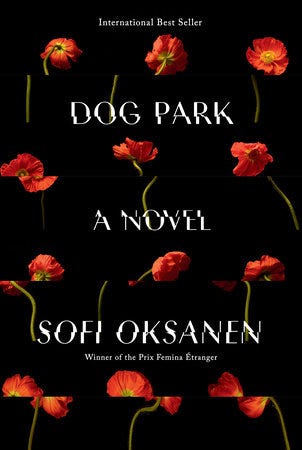
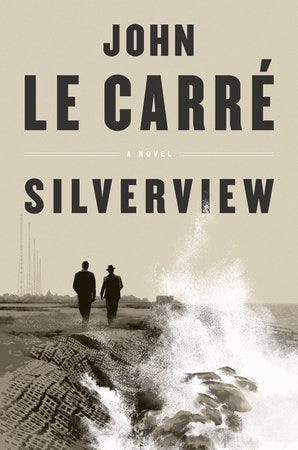



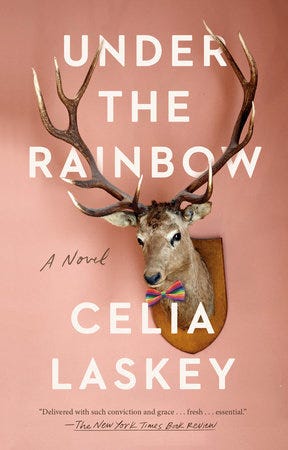
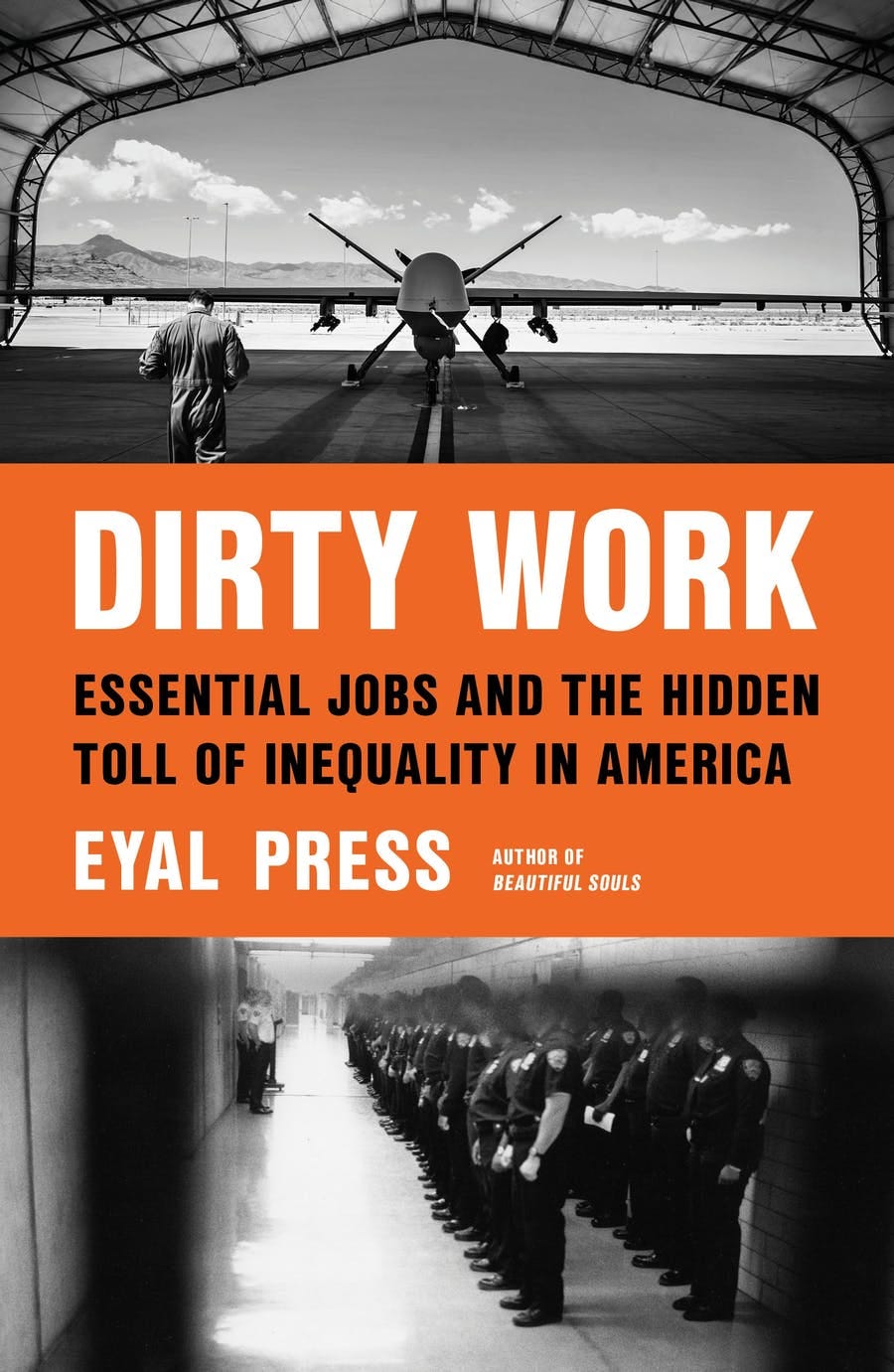




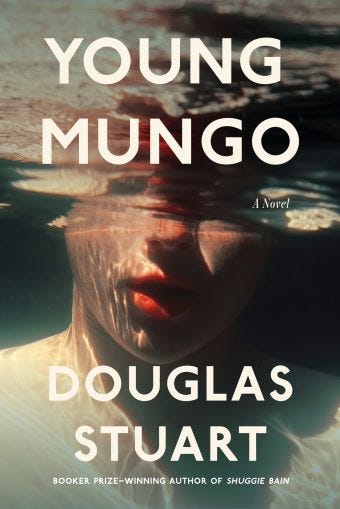
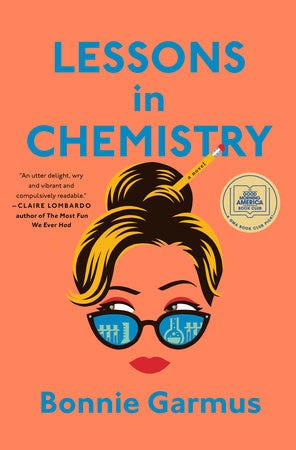
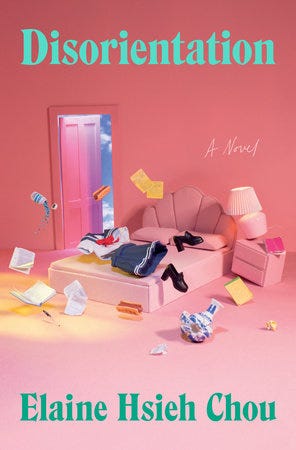



Nice review of Silverview, which I finished last month. A fitting end to the le Carre catalogue though it did lack the punch I'd come to expect. My wife is starting Disorientation soon!